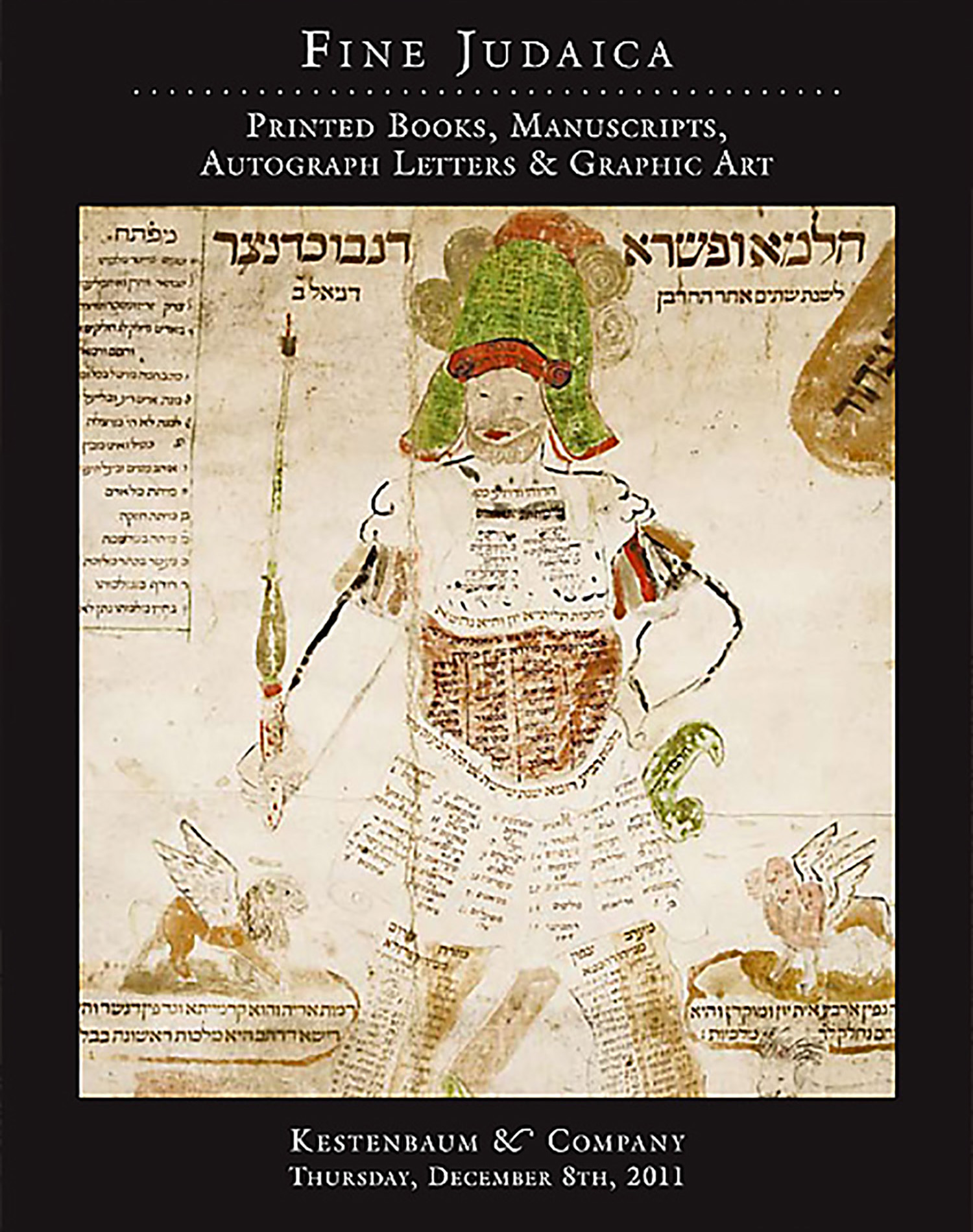Seder shel Chag HaSukoth [festival prayers]. According to the rite of Avignon.

AUCTION 53 |
Thursday, December 08th,
2011 at 1:00
Fine Judaica: Printed Books, Manuscripts Autograph Letters & Graphic Art
Lot 268
(FRENCH JUDAICA)
Seder shel Chag HaSukoth [festival prayers]. According to the rite of Avignon.
Avignon: 1689
Est: $10,000 - $15,000
PRICE REALIZED $9,000
Jews were expelled from Languedoc, as from the rest of the kingdom of France in 1394-5. They were expelled from Rousillon, to the west of Languedoc in 1493, from Provence to the east in 1501 and from Orange to the north in 1505 - leaving no safe haven for Jews except the papal territories, anywhere in what medieval Jewish parlance very loosely called Provence, i.e., the South of France. This island of toleration was made up of the the rural Comtat Venaissin (a papal possession from 1274) and the adjacent city of Avignon (purchased in 1348). By the end of the 17th century, the Jewish population was limited to the carrières, or ghettos, of Avignon, Carpentras, Cavaillon, and L'Isle sur la Sorgue. These"four holy communities" perpetuated the highly distinctive liturgy of medieval southern France, now known accordingly, as the Avignon or Carpentras rite. Because the use of the rite was so very restricted, none of it appeared in print until 1739. Until then, festival and daily prayer books according to the Avignon rite circulated in manuscript only.
The most celebrated of the scribes involved in the long production history of such volumes was Emanuel ben Gad Milhaud, responsible for this manuscript prayer book for Sukoth, Shemini Atzereth (here called Yom Geshem), and Simchath Torah. Aside from the intrinsic interest of the medieval rite itself, this volume is distinguished by Milhaud's exquisite calligraphy, which manages to be traditionally Provençal and distinctly baroque. Notable, too, is the strong pietistic influence here, evident, for example, in the dedication of one quarter of the book to elaborate rituals for Hoshana Rabba (here called Leyl HaHotemeth and Yom Aravah). Another glimpse of the life of the community may be found in a prayer for donors to the congregation's various charitable funds; thirty lines long, it mentions, among other charitable objectives: the purchases of books, support for the poor, at home and abroad; remuneration of rabbinic scholars, elementary school teachers, and tutors for poor youths; the provision of ritual baths, etc.
What distinguishes this manuscript above all however, concerns the most conspicuous of the rituals of the Avignon and Comtat Jews: the annual blessing of the Pope. Owing their communal existence entirely to his goodwill, the Jews of the four holy communities were commonly known as"the Pope's Jews"--a"special relationship" taken very seriously by the local authorities. Jews were required, for example, to refer to the sovereign in their official documents as"the Holy Father." But their chief act of homage took place on Simchath Torah, when lengthy prayers were offered for the well-being of the Pope, something similarly elaborate for the papal legate, then for the vice-legate, the rector, and so on and so forth until it all amounted to a special service in its own right. In this volume however, there is not a single mention of the Pope. This whole ceremony is missing, and not because the manuscript is in any way defective. Present, instead are indeed prayers of State - for King Louis de France and for"all the nobles and ministers of our lord the King, Louis de Bourbon." The Pope's Jews, then, may be found in this manuscript, to be blessing the Pope's worst enemy, or, as Pope Innocent XI himself put it,"the common enemy of western Europe."
This bizarre situation is explained by the date of the manuscript: 1689. The zenith of the Sun King's career is considered to be the year 1688, by which point he thought himself capable of prevailing against anyone - including the Pope. Accordingly, in the fall of 1688, he sent an army to occupy the Comtat and Avignon, immediately imprisoning the archbishop. A fleet was prepared at Toulon to sail on Rome, but it never did, and, after a year-long occupation, diplomatic imperatives persuaded Louis to hand the French papal territories back to the Pope - but not before Emanuel Milhaud had produced this volume, reflecting the unique realities of Simchath Torah 5449.
The IMHM at the National Library of Israel locates just one other manuscript of the Sukot Mahzor with the Avignon rite, located at Columbia University and dated 1722.
